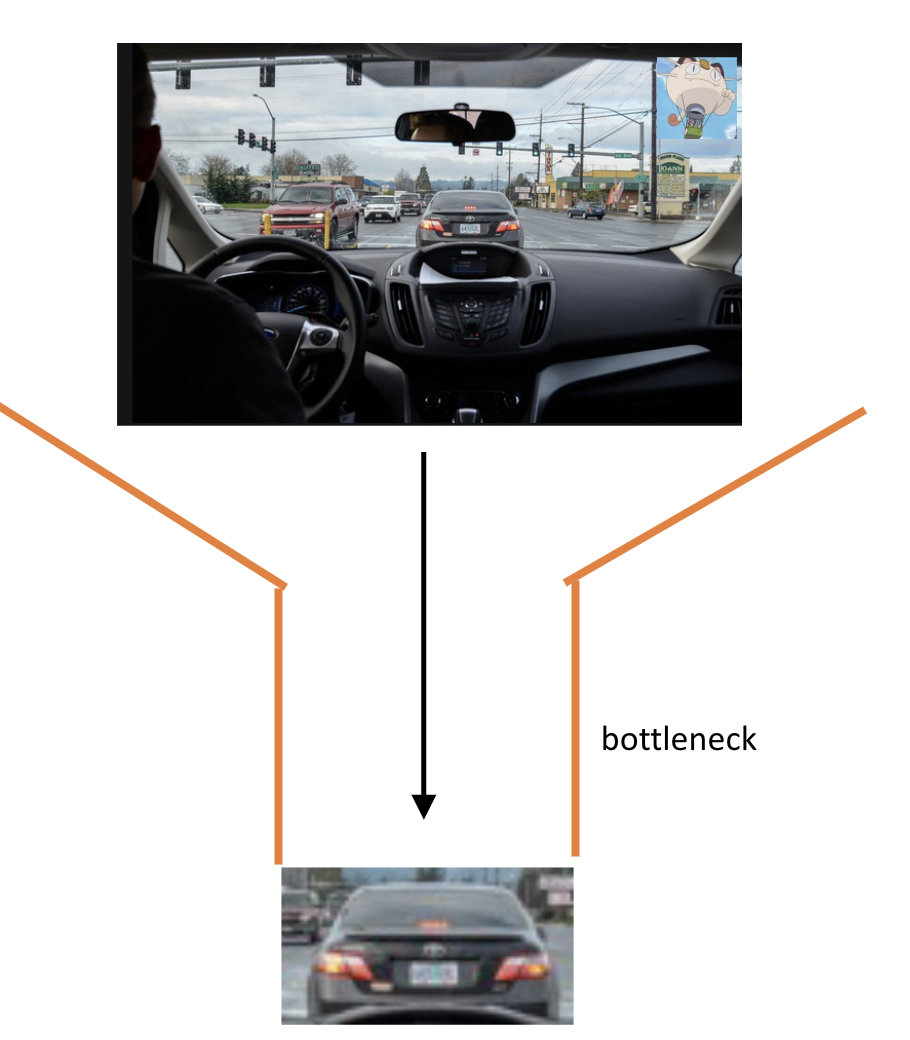BCS 111 Unit 5.1
1/21
There's no tags or description
Looks like no tags are added yet.
Name | Mastery | Learn | Test | Matching | Spaced |
|---|
No study sessions yet.
22 Terms
How do we choose what information to attend to?
Selective attention
Focus on a very limited events/objects/tasks
For efficient processing
But do we ever process anything from the information that we didn’t pay attention to?
Driving in an unfamiliar place
if the driver doesn't notice the hot air balloon flying by and only focuses on the traffic

4 theories to explain this scenario:
Filter
Attenuation
Spotlight
Schema
Filter theory
Irrelevant information is filtered out

Filter theory of attention
Limited capacity to process information
Overflow info is filtered through the ‘bottleneck’
All unattended messages filtered out
How do we test selective attention
Participants repeat what they heard (from either ear) - “shadowing”
Most people can repeat the attended message from one ear with very few errors
Dichotic listening task (DLT)
If the unattended message sounds weird (e.g., backward speech), some people can notice the difference
Evidence against the filter theory of attention
Cocktail party effect
When you hear a fire alarm (or something important) in a loud concert while talking to your friends, you can still notice it!
How to test this using DLT?
Play subject’s name to the unattended ear and see if they notice it
Cocktail party effect
Pashler (1998)
Only 33% heard their name if not informed about the possibility of hearing their name before the experiment
…Other different ways to test the processing of info in the unattended ear? → Switch ears
Evidence against the filter theory of attention
Switch ears: message played to one (attended) ear switched to another (unattended) ear
Treisman (1960)
People repeated a few words from the unattended ear right after switch
People not aware of the switch and their own repetition of the words from the unattended ear
Attention can also be influenced by the nature of the message itself – the meaning of the message
Another evidence for top-down process
Evidence against the filter theory
DLT tasks: Filter vs Attenuation
-
Filter theory
Only process and hear the attended messages
Not a valid account given the findings from DLT task
Attenuation theory
Unattended message tuned down
Higher attention level for familiar/important content
Spotlight approach
Perceive everything but actively cast a ”spotlight” on the target; things on the edge of the spotlight can still be processed
Is selective attention like “spotlight”?
Size of the spotlight varies with the size of the objects to focus on
Depending on the processing demands of each object/event
Control where to direct our attention
Schema
only take what you need; everything else untouched (not even entering the processing pipelines)
Interim summary of selective attention

pt 2

Neurophysiological evidence for selective attention
Banich (1997)
Two types of tones: long vs. short. Both can be heard in either left or right ear
Target: long tone presented
EEG evidence for selective attention
N1: early event-related potential reflecting attention process
When target is heard and attended in the left ear, N1 more negative in the left than right.
When target is heard and attended in the right ear, N1 more negative in right than left
Selective attention can also be influenced by arousal level
Kahneman (1973)
Attention: allocation of resources
Attention modulated by arousal level
Task difficulty
Level of interest